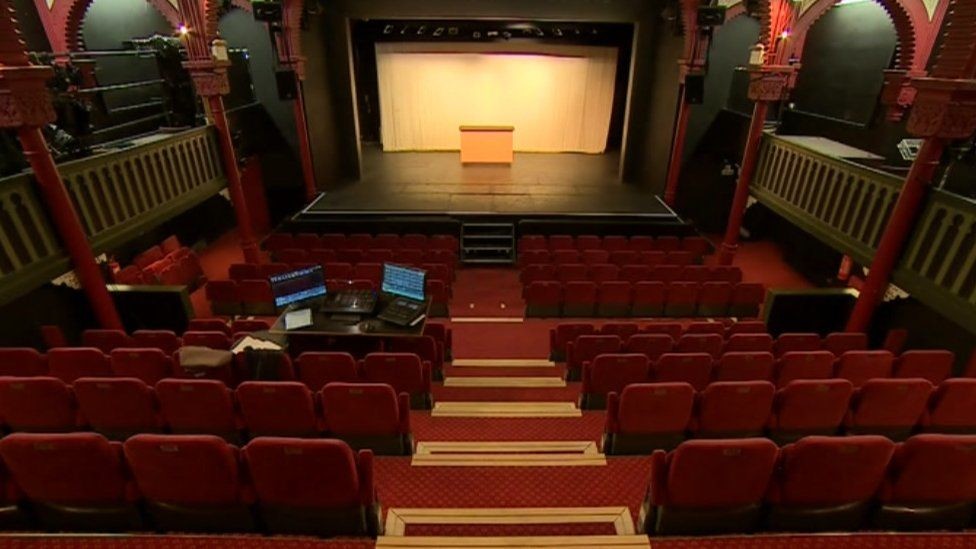
2015 marked the 70th anniversary of Cheltenham’s intimate community theatre. Of course, the building is much older than that, dating from a period when the town barely stretched beyond the current high street.
In 1801, Henry Thompson bought the entire Montpellier estate from the Reverend Delabere and the first building on this site was erected circa 1806/7 as a bath house containing six baths (some of which had shower facilities); by 1809 it had also a sudatory (an early steam bath), a closet from which you could self-administer an enema and a crystallizing room. Around 1810/11 the crystallizing room was joined by a laboratory and became the manufactory for "The Real Cheltenham Salts", a reduction of the spa water to its solid constituents, which could be added back to water and taken for medicinal purposes. By 1818, there were nine baths on the premises, of which two were cold water baths large enough for swimming.
The premises underwent many enlargements and improvements throughout the 19th Century, with the addition of a sizeable swimming pool, showers, air, steam and vapour baths, plus its own steam mill and bakery from around 1836, which made use of the energy produced by the boilers used in the salts manufacturing process. The main swimming pool could be covered over to allow gymnasium classes and cycling lessons to be held and in later years the baths played host to exhibitions, dances, fancy dress balls, dinners, and even an indoor cricket school!
The Montpellier Baths reopened in September 1900 after a major refurbishment, having been purchased by the Corporation of Cheltenham in 1899. The council added many slipper and medicinal baths in the area now used as the green room and rehearsal rooms. Further additions were made in 1916 and 1920. You could even partake of a radio-active mud bath!
The Baths never made a profit for the council and by 1939 the exterior was looking derelict. During the war, the Baths were closed to become an ARP Centre and the home of a division of the St John's Ambulance. Discussions and calls for a home for local amateur theatre began in 1944 and the Baths were converted to become the Civic Playhouse which opened on 9 April 1945 with a production of George Bernard Shaw's Arms & The Man - making it one of only a handful of new theatres to be created and begin operating during WWII.
In the early days, one of the balconies was used for dressing rooms, as most of the ground floor and the upper floors were still used for bathing! In 1948, Oxford University Dramatic Society brought a production of Hamlet to the Playhouse directed by Kenneth Tynan and with a young Robert Hardy in the cast. The following year, OUDS returned in a production directed by Tony Richardson with a cast that included the young Nigel Davenport.In 1950, a fire destroyed the wooden proscenium arch, the stage area and much of the balcony on stage left. The theatre was closed for several months before reopening.
The town council financed the Playhouse until 1957, when local volunteers took over the running of the venue under the guise of the Theatre & Arts Club. It is still run by volunteers to this day and has been a registered charity since 2001. The auditorium and green room were refurbished in 2008 – following, but not due to, the twin floods of 2007. Today, the venue also hosts dance classes, mothers and toddlers and other community groups as well providing a home for local residents to try their hand at the performing arts while hosting professional drama, stand up comedy, live music and film screenings. Cheltenham Playhouse continues to thrive and change as it has throughout its long and fascinating history.
Check out our Heritage website for more infromation on the history of Cheltenham Playhouse: https://heritagecheltplayhouse.co.uk/

